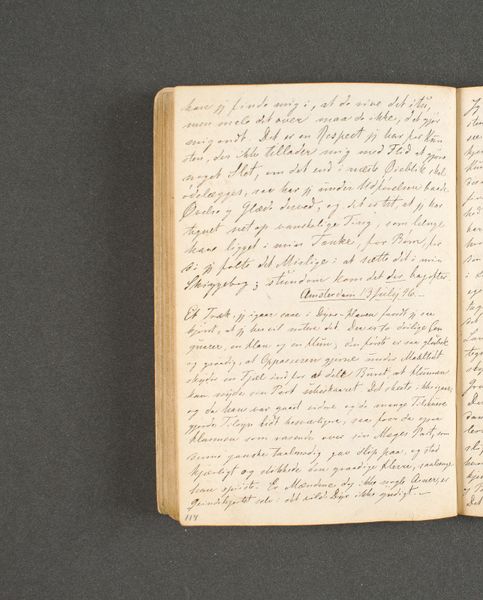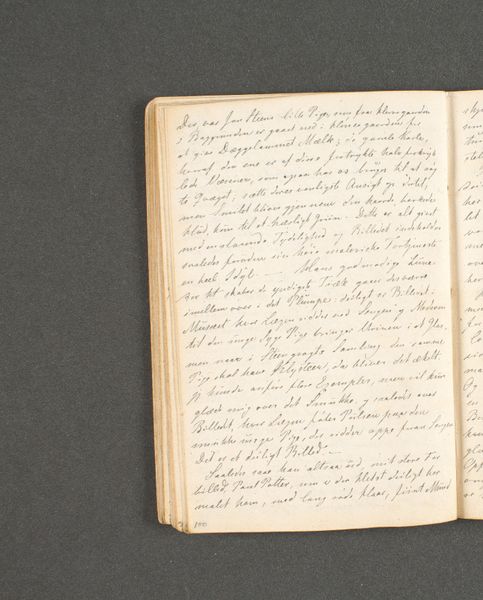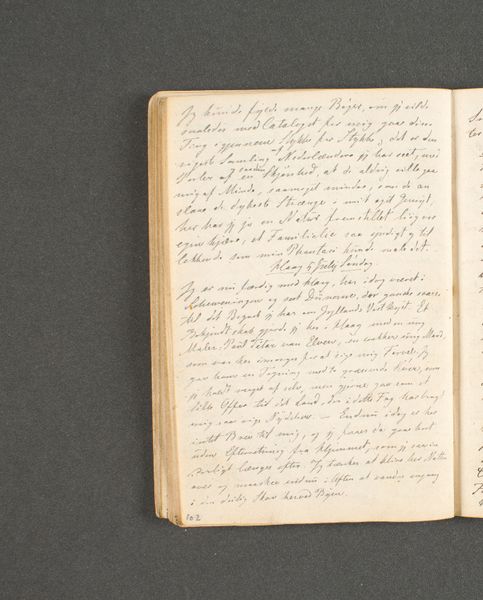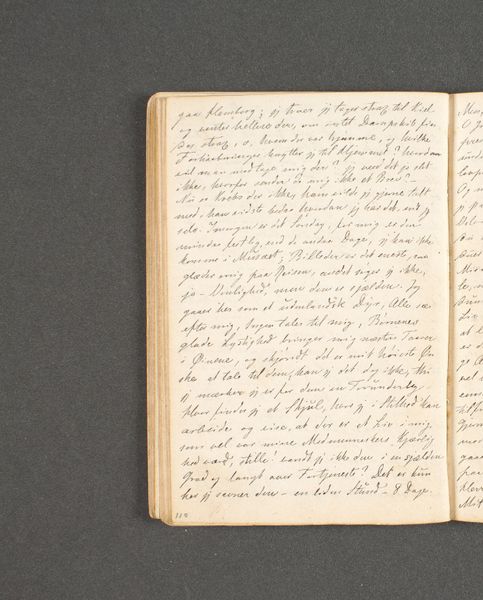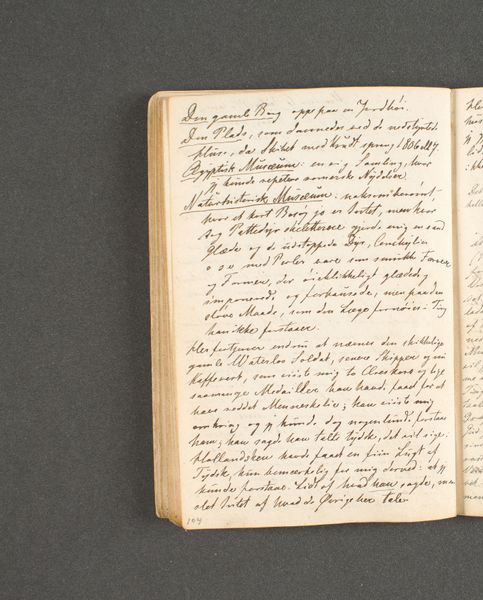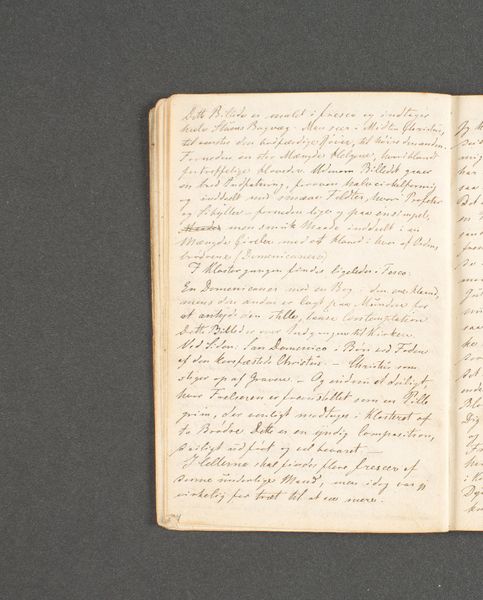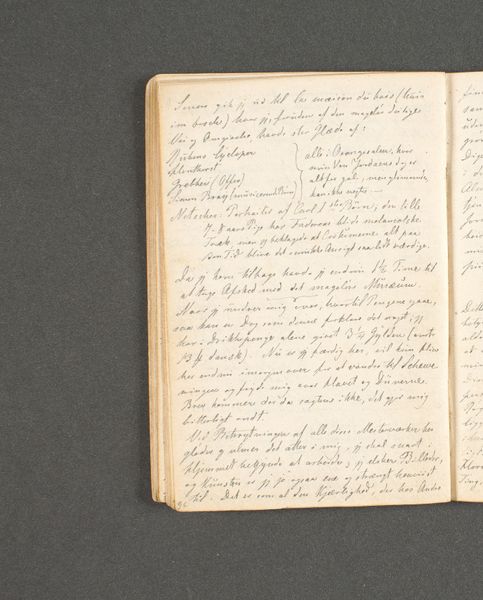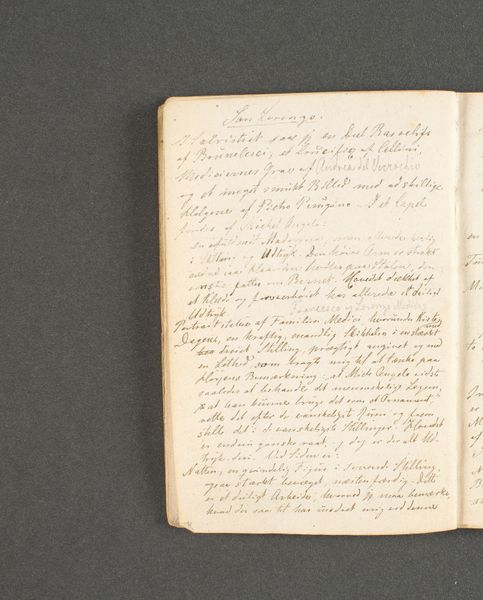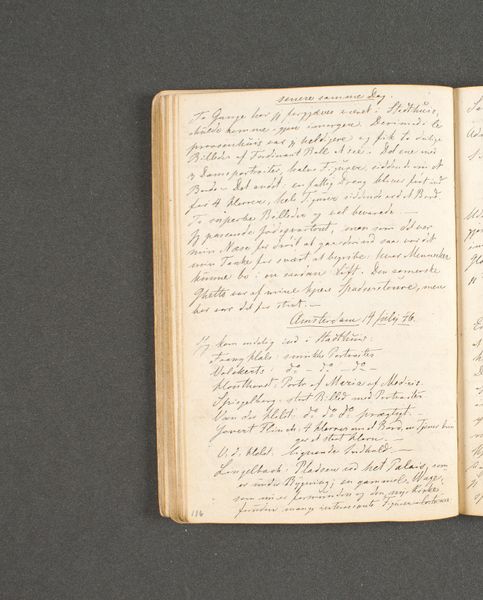
drawing
#
drawing
#
landscape
#
romanticism
#
genre-painting
Dimensions: 131 mm (height) x 89 mm (width) (bladmaal)
Curator: This is Johan Thomas Lundbye's "Rejsedagbog. Amsterdam" from 1846, a drawing currently held at the SMK in Copenhagen. The diary format, its very construction, is what first strikes me. Editor: Yes, it's a glimpse into his thoughts, presented as a personal, almost intimate record. It's interesting that what may have been an everyday notebook is now in a museum. What can you tell me about the materials themselves and the choice of making this artwork on paper, in this format? Curator: Well, the selection of paper and ink provides crucial context. Paper was becoming increasingly accessible, reflecting the rise of literacy and a growing market for accessible imagery and artistic expression. But look closer - does the handwriting reveal anything? How does the act of writing contribute to the final drawing and it's reception? Editor: The script seems very fluid, quick. So, in essence, it documents a real time observation by Lundbye? Curator: Precisely! These "genre paintings" as they are classified, were popular in the Romantic period as reminders of personal feelings during the early days of mass-produced commodities like sketchbooks. They allowed everyday citizens the chance to record something precious like the upper-class tourists. Editor: So the art becomes about who has the power to record their lives for the history books and who profits from it? Curator: In part, yes! We can consider this drawing and others of its kind, a document or a symptom of wider political, and class conflicts of the early to mid 19th century. By calling attention to these details we are encouraged to reflect critically on how history can, or has been made and viewed from multiple positions in culture. Editor: That’s so interesting to consider—the economics of art materials and how they open a lens into power structures. It's made me consider sketchbooks and how technology today shapes our access to capturing fleeting images and reflections in comparison to a landscape artist like Lundbye. Curator: Agreed. Examining the materiality shifts the conversation beyond aesthetics and allows us to question cultural narratives surrounding art making and viewership in the era.
Comments
No comments
Be the first to comment and join the conversation on the ultimate creative platform.
